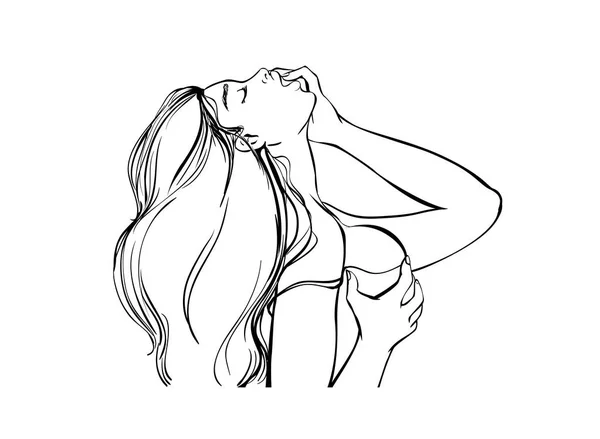Why The whole lot You Learn about Hollywood Sex Is A Lie
By 154666_whse2l / October 8, 2024 / No Comments / Uncategorized
In 1998, Michigan State University analyzed 33 in style video games for the Nintendo and Sega Genesis consoles. A 2006 research from Virginia Polytechnic Institute and State University found playable female characters seem less incessantly than males in evaluations of widespread video games. The one major video games that Peach was not kidnapped in had been in the North America launch of Super Mario Bros. Princess Zelda within the early The Legend of Zelda collection, the Sultan’s daughter in Prince of Persia, and Princess Peach via a lot of the Mario sequence are paradigmatic examples. By 2013, Peach appeared in 14 of the principle Super Mario video games and was kidnapped in 13 of them. 2, Super Mario 3D World, and Super Mario Bros. Based on Madeline Messer within the Washington Post in 2015, amongst the highest 50 endless operating cellular video games, 98% of these with gender-identifiable characters featured male protagonists, 90% of which had been free to play. 46% supplied female characters, and solely 15% for free. The sooner arcade sport Score (1977) by Exidy represented female characters, however no screenshots are recognized to be available. Namco’s arcade video recreation Pac-Man (1980), whereas starring a male protagonist, was “the primary industrial video sport to involve large numbers of ladies” as players.
The yr 2013 featured ladies in leading roles in quite a few award-profitable video games such as the Last of Us (2013), Bioshock Infinite (2013), the rebooted Tomb Raider (2013), and Beyond: Two Souls (2013). A study of those video games found that though the leading female characters in these video games had been capable of subvert predominant gender stereotypes, ladies have been nonetheless restricted by males in the narratives, particularly via benevolent sexism. Zelda grew to become playable in some later video games of The Legend of Zelda series or had the pattern altered. Gerudo girls in the Legend of Zelda collection returned within the 2017 recreation Breath of the Wild. The prisoners serving as clients for these women are informally known as “husbands”. The ladies there primarily talk about how attracted they’re to males, for the presumed cis, straight male player. She wrote that these covers reinforce the prevailing gender stereotypes and sexual discrimination in opposition to ladies.
 Shanon Sherman described how the illustrations on video recreation covers portrayed ladies in want of rescue. Elizabeth Behm-Morawitz suggested that the diminished presence of feminine characters implies a secondary standing for girls in video games, and additional prompt that when playable female characters do seem in video video games, they’re more often scantily-dressed and oversexualized than men. For women as game gamers and builders, see Women and video games. Lara Croft, the protagonist of Tomb Raider (1996), is among the most effective-known robust, fictional girls in a wide range of media. April Ryan from The Longest Journey (1999) has been in comparison with Lara Croft, as she exhibits much less distinguished bodily feminine attributes than Lara however more feminine psychological traits, as contrasted with Lara’s masculine connotations like aggressiveness and pressure. Pp. 43-48) concluded from the results of a 201-person survey that 90% of male topics and 85% of feminine subjects perceived the computer as masculine (in gameplay versus the pc).
Shanon Sherman described how the illustrations on video recreation covers portrayed ladies in want of rescue. Elizabeth Behm-Morawitz suggested that the diminished presence of feminine characters implies a secondary standing for girls in video games, and additional prompt that when playable female characters do seem in video video games, they’re more often scantily-dressed and oversexualized than men. For women as game gamers and builders, see Women and video games. Lara Croft, the protagonist of Tomb Raider (1996), is among the most effective-known robust, fictional girls in a wide range of media. April Ryan from The Longest Journey (1999) has been in comparison with Lara Croft, as she exhibits much less distinguished bodily feminine attributes than Lara however more feminine psychological traits, as contrasted with Lara’s masculine connotations like aggressiveness and pressure. Pp. 43-48) concluded from the results of a 201-person survey that 90% of male topics and 85% of feminine subjects perceived the computer as masculine (in gameplay versus the pc).
 In a 2012 sample of 669 motion, shooter, and function-enjoying video games selected by EEDAR, 300 (45%) offered the choice to play as a female, however only 24 (4%) had an exclusively feminine protagonist. In keeping with a 2008 study by the Pew Research Center, “fully 99% of boys and 94% of ladies” play video games. Both genders play video games, but studies recommend variations in platform and genre preference. In 1994, Australian Hyper magazine writer Virginia Barratt accused the video recreation business of being sexist for its lack of feminine representation, stating that video games “are made by boys for boys who play with different boys” and that girls “hardly ever get a glance in, unless after all there’s a sufferer who needs to be rescued or someone must wear a bikini to cheer the macho males on.” She additionally mentioned that many female gamers, despite enjoying common arcade video games such as Street Fighter II and Mortal Kombat, had been discouraged from visiting arcades due to their standing as male-dominated areas. Studies of the prevalence of feminine characters in video games began to be conducted in sociological, academic, and cultural journals as early as the late 1970s and early 1980s. In 1979, researchers publishing within the Psychological Record (Vol.29, No.1.
In a 2012 sample of 669 motion, shooter, and function-enjoying video games selected by EEDAR, 300 (45%) offered the choice to play as a female, however only 24 (4%) had an exclusively feminine protagonist. In keeping with a 2008 study by the Pew Research Center, “fully 99% of boys and 94% of ladies” play video games. Both genders play video games, but studies recommend variations in platform and genre preference. In 1994, Australian Hyper magazine writer Virginia Barratt accused the video recreation business of being sexist for its lack of feminine representation, stating that video games “are made by boys for boys who play with different boys” and that girls “hardly ever get a glance in, unless after all there’s a sufferer who needs to be rescued or someone must wear a bikini to cheer the macho males on.” She additionally mentioned that many female gamers, despite enjoying common arcade video games such as Street Fighter II and Mortal Kombat, had been discouraged from visiting arcades due to their standing as male-dominated areas. Studies of the prevalence of feminine characters in video games began to be conducted in sociological, academic, and cultural journals as early as the late 1970s and early 1980s. In 1979, researchers publishing within the Psychological Record (Vol.29, No.1.